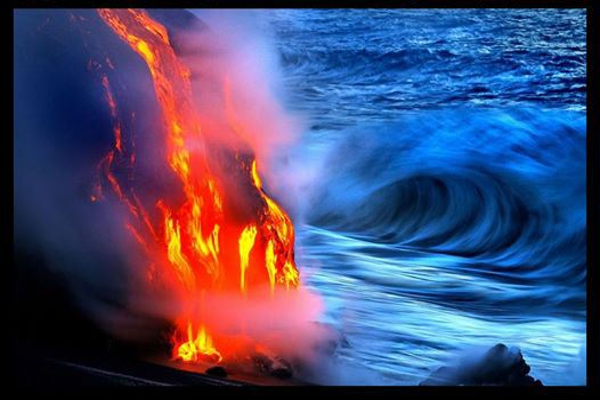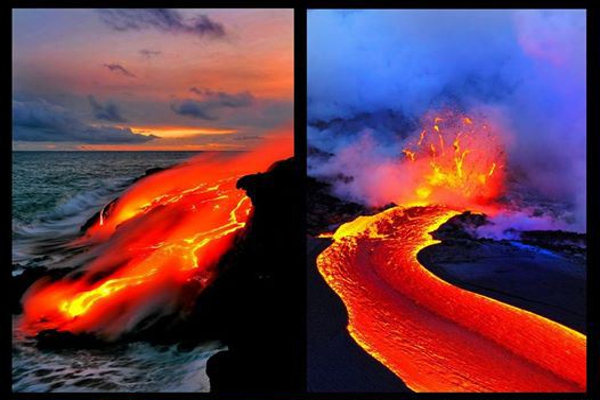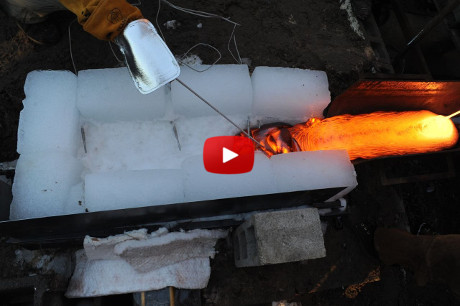Last year, a group of researchers from the Syracuse University Lava Project decided to see just what would happen if you mixed a huge block of ice and 660 pounds (300 kg) of lava. The team, led by geologist Jeff Karson (in collaboration with Bob Wysocki, a sculptor), went a step further by melting their own basaltic lava, a move that allowed them to mimic lava in its natural environment, like the conditions found atop the summits of snow-capped mountains where volcanic vents lie (like in Iceland).
It took around four hours to melt the lava to the needed temperature (about 1,100°C/2012°F to 1,350°C/2462°F), but the volatile substance was held much longer than necessary. Leaving it sitting at such temperatures (above basaltic magma’s boiling point) ensures that the substance is thoroughly melted and no longer has any undesirable components (like water, for example) that might give off a faux impression with the results.
See What Happens:

After witnessing a similar experiment, some students reported that the huge soccer ball sized bubbles are rather flexible once they cool (which happens much more quickly than many people would anticipate). They are even semi-transparent…kind of like saran wrap.
The results are cool in and of themselves, but who doesn’t want to know just how long it takes for something unimaginably hot to destroy something incredibly cold?
Source:fromquarkstoquasars









